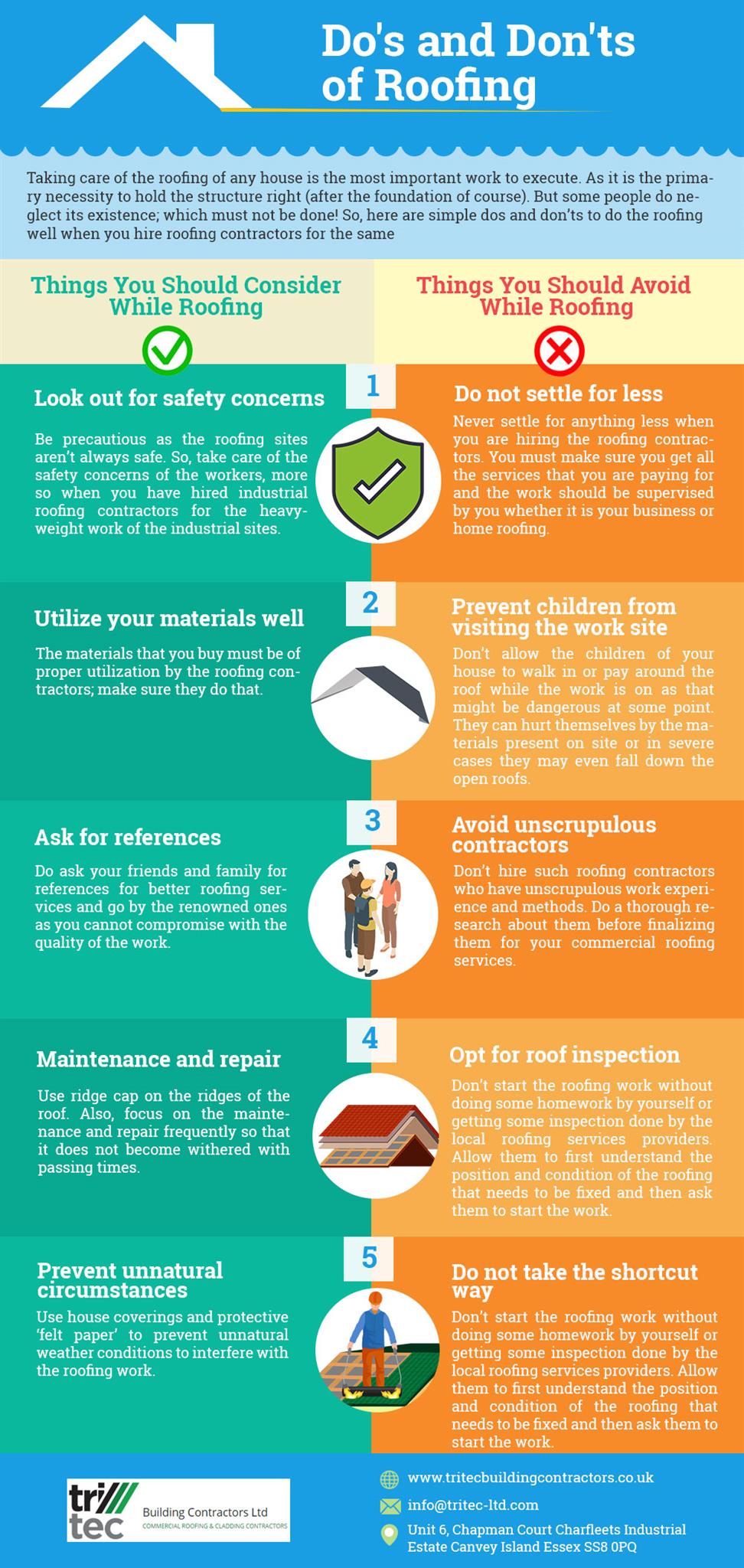The Function Of Weather In Roof Covering Installment: Selecting The Right Seasons And Issues For Success
The Function Of Weather In Roof Covering Installment: Selecting The Right Seasons And Issues For Success
Blog Article
Post Produced By-Jantzen Timm
When it involves roof covering installments, the weather can make or break the task. Imagine the disappointment of taking care of materials that will not cooperate due to extreme warm or battling slippery surface areas caused by unexpected rain. Understanding the impact of weather conditions on your roof project is crucial for an effective result. So, let's check out exactly how different climate components can influence the high quality and longevity of your roof covering setup, making sure a task well done.
Influence of Temperature Level on Roof Installation
When it involves roof covering setup, temperature level plays a critical function in the process. The perfect temperature level for roof jobs normally drops between 45 and 85 degrees Fahrenheit. Extreme warmth can trigger products like roof shingles to come to be as well pliable, resulting in prospective damages throughout setup. On the other hand, chilly temperature levels can make materials brittle and susceptible to fracturing. It is essential to schedule roofing system installations during moderate temperature levels to make certain the very best end result.
During colder weather condition, specialists may require to take additional preventative measures such as using heated equipment or enabling products to heat up before installation.
On the other hand, heat may call for job to be done earlier or later in the day to avoid the peak temperatures. By thinking about the temperature level and its results on roof covering products, you can assist make certain a successful installment that will stand up to the elements for years ahead.
Effect of Rainfall on Roof Projects
Roof covering jobs can be considerably affected by rainfall, impacting both the timeline and the high quality of the setup. roofing services in stone oak texas or snow can create unsafe conditions, making it dangerous for roofers to service a wet surface area. Furthermore, wetness can endanger the adhesion of materials like tiles or underlayment, causing possible leaks or problems in the future.
If it rains during a roofing task, the water can leak into susceptible areas, causing hold-ups as the installation team have to await the roofing system to dry before continuing. Too much wetness can likewise advertise the development of mold and mold, more threatening the honesty of the roofing.
To stay clear of these problems, it's recommended to set up roof tasks throughout drier seasons or keep an eye on the weather prediction closely to prepare around any type of possible rainstorms. By taking precautions to operate in desirable weather conditions, you can ensure a smoother and more effective roofing installation process.
Impact of Wind Rate on Setup Success
Throughout roofing system setup, the speed of the wind plays a critical role in figuring out the success of the task. High wind rates can pose considerable challenges to roofing professionals, potentially causing safety and security dangers and high quality problems. When wind rates go beyond suggested limitations, it comes to be hard to manage products, enhancing the threat of mishaps and damage to the roof materials. metal roofers in san antonio tx can likewise affect the accuracy of dimensions and the accuracy needed for correct installation.
To make certain a successful roof covering installation, it's vital to check and consider wind speeds. Ideally, roofing system installment must occur on days with low to moderate wind speeds. This not just boosts the safety of the employees but also improves the total top quality of the installment.
Roof covering jobs scheduled during calm weather conditions are more likely to be completed successfully and with less errors. By focusing on wind speed forecasts and planning as necessary, you can assist make sure a smooth and effective roof installment process.
Conclusion
So, when it pertains to roof covering installment, keep in mind to take into consideration the weather conditions to make certain a successful job. Optimum temperature levels, dry conditions, and moderate wind speeds are crucial aspects to prioritize for a smooth setup process. By arranging your job throughout the best seasons and perfect weather conditions, you can achieve a sturdy and resilient roof that will certainly shield your home for many years ahead.
